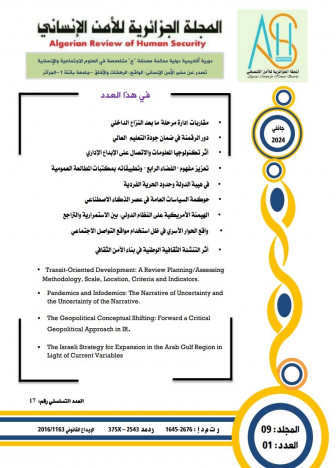Transit-oriented Development: A Review Of Planning/assessing Methodology, Scale, Location, Criteria And Indicators.
DOI :
https://doi.org/10.59791/arhs.v9i1.3782Mots-clés :
Transit-oriented development, planning/assessing methodology, criteria, indicatorsRésumé
Planning and assessing methods of transit-oriented development are computationally demanding and time-consuming. Particularly when selecting between criteria with indicators is critical. This study aims to find solutions to this question and detect the gaps in transit-oriented development planning/assessing Methodology by conducting a systematic review that inquires its planning criteria and measuring methods in six topics: methodology, principles, scale, location, criteria and indicators. For this purpose, we employed the Publish or Perish software to collect a bibliographic database from Scopus documentation in order to identify the literature stating transit-oriented development worldwide from its emergence in 1993 until 2021. After a meticulous reading carried on 726 papers found, only 34 articles were pertinent. The data systematization of the articles was then performed in the QDA Miner-Lite to convert textual data into quantitative relative data by dividing each literature in six issues: Methodology, principles, scale, location, criteria and indicators. The findings revealed evidence for a stronger presence of research over corridors and regional contexts, besides the inexistence of studies directed to African and Latin American urban centres. Furthermore, the criteria were inadequately expressed, and the indicators were insufficiently assorted, while economic criteria, human aspects, environmental impacts, and local-neighbourhoods scale have been neglected in previous TOD literature. Analyses by continent unveiled a variety of planning/assessing methodologies in East Asia and Europe. In contrast, Southeast Asia, North America and Asia/Australia keep only assessment studies. This study provides researchers/planers with an inventory of TOD planning/assessing tools, a perception of prospects for future research, and the flaws that must be addressed. Therefore, future researches shall expand urban morphology and transit aspects to economic concentration, social aspects and environmental impacts. Moreover, the indicators quantity should be equal to each criterion, or at least better weighted. Besides that, every criterion must have its most paradigmatic indicator(s) in accordance with each city’s characteristics and needs.




